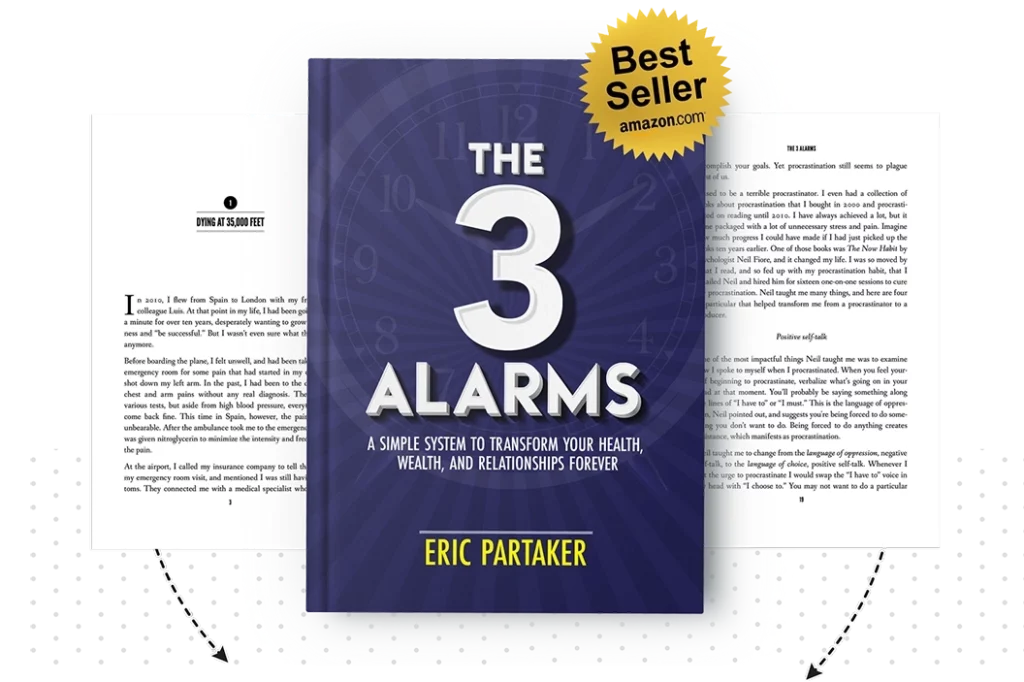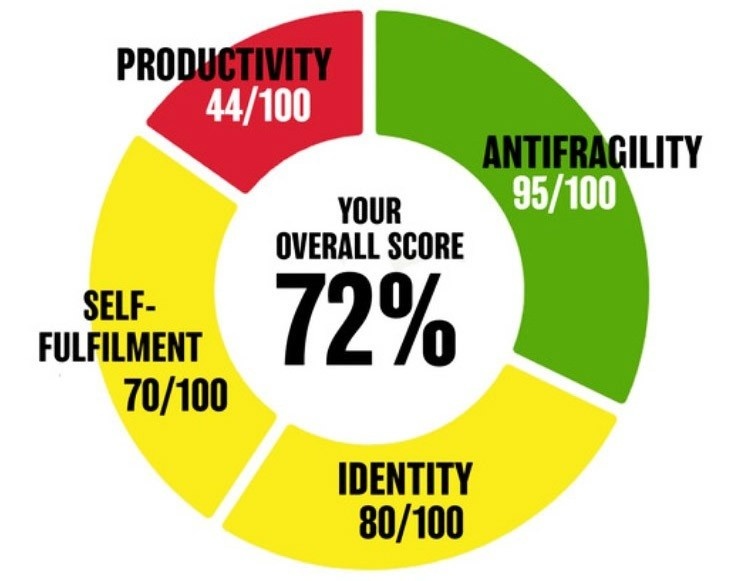Unless you prioritize well, you’ll remain overwhelmed, frustrated, or just disappointed with your results. Here’s exactly how you can prioritize like a genius so you can get a lot more done.
KEY POINTS
Focus On The Outputs That Matter Most – Ask yourself “Out of all the things that I’m doing right now, what really matters the most?” You can’t do everything, but if you really focus on what matters most you can get the right things done.
Create a Master Task List – Have one place where you keep all your notes, and one place where you keep your to-do-list. If you have post-It notes everywhere you’re going to lose track.
Rank Your Tasks – Create a list of the six most important tasks you want to complete the next day. Any left over at the end of the day put them into the mix for the next day.
Focus On One Thing at a Time – Eliminate all of the distractions and just focus on that one thing until it’s complete.
Schedule, Show up, Single task – Treat all work as if you are in a meeting. Schedule your work, Show up, don’t get distracted and single task, put all of your attention onto that one piece of work like you would in a meeting.
Look For Leverage Points – Look for the tasks that, if done, might eliminate the need to do other things or create a positive ricochet effect on those things.
TRANSCRIPT
Anybody can prioritize like a genius with the right tools. You don’t need to be a certain type of person or have a certain type of mindset in order to prioritize well, and unless you do prioritize well, you’ll probably remain overwhelmed, frustrated, or just disappointed with your progress or results. Today, I’m going to show you exactly how you can prioritize like a genius so you can get a lot more done.
Hi, my name is Eric Partaker, and I’m an award-winning entrepreneur and I’ve also been recognized as the CEO of the year. I’m also the author of two best-selling books, including The 3 Alarms. Now, prioritization did not come easily for me. I was constantly trying to do way too many things and, as a result, not getting really anything done, but that was in the first half of my career. In the second half of my career, by implementing many of the things that I’m going to be showing you today or talking about today, I was able to completely up my prioritization game, and not just for myself, but also for the thousands of people that I’ve helped to date to reach their full potential in both work and life.
Here we go. Six methods to help you start prioritizing like a genius. Number one, you want to be focused on what I call the outputs that matter most. Not everything matters and you need to take a step back. Take a step back from what you’re doing and ask yourself, “Out of all of the things that I’m doing right now, what really matters the most?” If you have a restaurant, what really matters the most? Well, how many meals that you’re selling, for example. If you are trying to be an author, what matters most is how many books you end up writing and publishing at the end of the day. If you’re a speaker, what matters most is how many speaking gigs that you’re actually landing and doing on a weekly, monthly, or annual basis.
The priority tip number one or the prioritization tip number one is to focus on the outputs that matter most. Really take a step back away from all of the things that you could be doing and ask yourself, “What are the things that I should be doing? What are the things that are going to really count here, that are really going to matter for the business and the life that I’m trying to create?” You can’t do everything, but if you really focus on what matters most you can get the right things done. Focus on the outputs that matter most.
Number two, you want to capture all of your to-dos on a master task list. Have one place where you keep everything. This is absolutely critical to being able to prioritize like a genius. If you have Post-it Notes everywhere, written notes here, some electronic notes here, some other notes maybe in an electronic file somewhere, you’re going to lose track of all of the things that you need to be doing. It’s much better to have one place to keep your notes, one place to keep all of your to-dos. I recommend that you pick either an electronic place to keep all of that, there’s so many electronic tools out there that you need to be using for to-do list management, or you keep a simple journal or a planner that you use to keep your master task list. We need one place to put all of the tasks that we’re working on so that we don’t have to constantly refer to lots of places to figure out what we should be doing on a daily basis.
Number three, get used to ranking your tasks that you want to do each and every day on a daily basis, and I like to do this actually at the end of the day before the next day begins. I like to shut down my day by asking myself, “What are the top things that I want to do the following day?” There’s a really cool method called The Ivy Lee Method, so Ivy Lee, he was a productivity consultant I think at the beginning of last century. Ivy Lee had this standard way of prioritizing his day by coming up with the six most important things that he should be doing on a daily basis. When he would come up with his six things, he would then make sure that he had them in the right order of priority. “What’s the right thing for number one? Then, what do I do number two, three, four, five and six?”
His method was super simple. He would start with the first thing on that list once he adjusted around the priority and he wouldn’t work on anything else until he finished that first thing, and then he would move to the second thing on the list. Now, when he got to the end of the day, if he hadn’t completed all six things he would put whatever was left over into the mix for consideration for the next day together with any new things and once again reprioritize that list from one through six.
That’s a method worth giving a shot if you haven’t tried it before, and once again that’s called The Ivy Lee Method. It’s a simple way to prioritize what you want to do on a daily basis, but at the same time not pick too many thing to do. Rather than try to do everything on your master task list, in this example you’re only trying to do a maximum of six things. Even if you don’t get around to doing all of those six things, that’s okay. You can practice some self-compassion there and not beat yourself up about that, but work on one thing at a time as you progress through the list.
Number four, and I’ve sort of alluded to this in the previous step, when you’re working on something, focus on just that one thing at a time. You have to recognize, what are the things that typically lead to distraction for you? I know what they are for me. It’s if I have my phone in sight, if I have too many browser tabs open, for example, if I’m working on the laptop. Then, all of those things are likely to prompt me to look at something else. I might be distracted by a notification on my phone, or simply seeing my phone there off to the side often prompts me to want to pick it up and just check what’s going on, so I keep that phone out of sight.
Similarly with browser tabs, if you have a cluttered screen as you’re working, if you have a cluttered visual outlay in front of you, it’s very distracting. If you have browser tabs open, especially if you have like an email tab open or some kind of collaboration tool open where you can see an incoming email or a notification coming in, these types of things are not going to be good for your ability to stay focused on that single task at hand.
You’re very likely to jump off and want to start working on one of those other things or check it out at least, and then we know what that’s like. You just end up going down the rabbit hole and maybe never even coming back to what you were working on. Number four is simply to make sure that when you’re working on a task, eliminate all of the distractions, kind of want those like horse blinders on, and just focus on that one thing until it’s complete.
Number five technique to help you prioritize like a genius, I call this The Three S’s, and they stand for schedule, show up, and single task. We just talked about single tasking in the previous example, so you understand what that is now, but what is the schedule and what is the show up? What does all of that mean? Well, I want you to think about when you are meeting with somebody else. Often, if you have an important meeting that needs to take place, what do you do? You schedule the meeting. You show up for it.
When’s the last time, for example, you had an important meeting and you just didn’t show up? That doesn’t happen, so you schedule it, you show up for it, and then your focus is on that person when you are in that meeting. You’re not suddenly starting to work on something else. To prioritize like a genius, it’s about having that same type of respect that you demonstrate for someone else for yourself.
The number six thing that you can do to prioritize like a genius is look for the leverage points. What do I mean by that? Look for the tasks which if you just do that one thing, it might eliminate the need to do something else. Or, it might have a positive ricochet effect on something else. Or even better, is there a task that you can do which is merely delegating the outcome that you want to achieve to someone else so that they can do it for you? Maybe someone on your team or a friend or a colleague, so look for the leverage. Look for the things that, if done, might eliminate the need to do other things or create a positive ricochet effect on those things.
I’d love to hear from you, so don’t forget to leave a comment and a rating as well. If you’d like to get a copy of my new book, The 3 Alarms, please head over to my website at ericpartaker.com. That’s E-R-I-C, ericpartaker.com, where you can pick up a free digital copy of my new best-selling book, The 3 Alarms.




